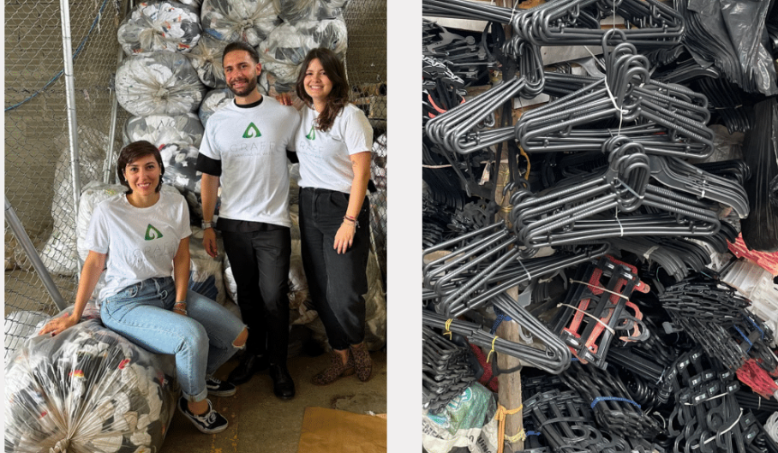Blitzing the Black Friday Blues—Lessons in Sustainability with GRAFF INC
One of the US’s youngest holidays, and potentially its most problematic, Black Friday is a celebration of consumerism. But, with some of Earth’s residents seeking to live more sustainably, should you charge into your nearest mall with no thought to its consequences?
Enter GRAFF INC
They’re a student startup at Hult with a mission to change the fashion industry for the better—and for good. Their miracle material, Texterial, is a plastic alternative made from recycled fabrics. Shrinking the mountains of textile waste from the Hult Prize finals in Paris, GRAFF INC has already shaken up the industry and shows no signs of slowing down.
But why are they doing this? What makes Texterial so special? And how do they keep everything sustainable? I’ll let them tell you in their own words.
The problem: Waste in the fashion industry
The need for a circular economy all starts from overproduction. Consider every t-shirt made: each one requires excess fabric—like a cookie cutter mold. Now, these cookie-cutter molds are thrown away along with all the other excess t-shirts that don’t even make it to the shelves. Then consider the number of seasons—Spring, Summer, Fall, Winter—and everything in between. What do you get? Billions of t-shirts that are produced for $10. Imagine mountains of fabric waste, in our oceans, and our deserts and you’ve got some idea of the scale.
The solution: Repurpose the waste
We’re not saying there’s a magic bullet that will cure the world’s sustainability issues but Texterial gives us a fighting chance. Texterial started off with hangers but now we work with clients and customers all over the world to form this plastic substitute into several household items. But, first…
How’s Texterial made?
We start with waste—this waste can come from manufacturing companies or wasted clothes. So a good relationship with waste management companies is required to get our hands on all this excess fabric. Then we process, shred, and chop it all up so we’re left with a powder. Then this powder is heated and mixed and formed into a pellet. And voila! This pellet can be used as an input in any injection molding machine. So, organizations take this pellet and mold it into products that would ordinarily be plastic. This is cost-effective for our clients because they don’t have to purchase new equipment—just our pellets. Their machinery stays the same they just use Texterial instead of plastic.
What are its uses?
Texterial can be formed into so many domestic items: think shelving units, trays, and furniture. It can even be used as a wood substitute! This gives us even more scope to tackle deforestation. One of our clients in Colombia is using it to create housing—substituting the wood panels with Texterial. We’re right at the start of our journey and innovations like ours are nothing new—the future is bright.
The challenge: Stop the waste going to waste
This is where it gets complicated. In order for this to be a purely sustainable practice we have to ensure our products don’t end up in landfill themselves. It’s all part of the circular economy but we need to close that loop and recalling our products is the next step. Take Patagonia, they are our inspiration in the industry because they operate at a loss—because sustainability is more important to them than profit. We aspire to that but to get to that stage you have to be massively profitable. So, we need to get more profitable—no one saved the world from a standing start. Once we’re there, we can recall our products and reuse them. This will be easier with a GRAFF INC logo so as to avoid any messy copyright issues. And then that’s that—loop complete.
GRAFF INC’s mission is part of a wider cause. Businesses leading the charge for a sustainable future are special. At Hult, we don’t just know that—we act on it. This is why we’re connecting researchers and practitioners together in our sustainability lab. Read all about the lab and its impact here.


